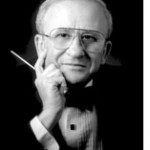SAN DIEGO –It seems like a contradiction of terms. Where does serious art music fit into one of the biggest pop culture events of our time?
Never underestimate the influence of our classical music in the most unexpected places. During last Sunday’s 45th version of the National Football League’s championship game between the Green Bay Packers and the Pittsburgh Steelers, I decided to watch the game with a slightly different perspective. After all, without the participation of our San Diego Chargers, my interest in the final outcome of this game was something less than intense.
As it turned out, the game was somewhat interesting, if not captivating. It generated a certain degree of drama in the fourth quarter, and concluded with a whimper instead of the hoped-for “last play” heroics which would have earned it the description of being remembered as “memorable”.
So, I focused my attention to the celebrated and much publicized commercials being introduced during the game and to see how many utilized classical music.
I was pleased and also somewhat surprised in what I saw and heard.
Starting in the first quarter of the game, out of the first three commercial spots, two of them used music that warmed my heart: I heard snippets of Vivaldi’s The Seasons, and Verdi’s Requiem. These were followed later by commercials quoting from Ponchielli’s Dance of the Hours, from La Giaconda, Tchaikovsky’s 1812 Overture, Carl Orff’s Carmina Burana, Boccherini’s famous Minuet, from the Quintet for Strings, but what surprised me most of all, a comical re-enactment of an ancient border guard dispute with the two opposing guards, who jousted to the music of a frequently used Italian song, La Folia. Its theme has been the inspiration to many variations, from Corelli to Rachmaninoff.
There were other direct quotes, such as the theme of the Evil Empire from John Williams’ score to Star Wars. Call this classical music, if you wish.
Also, we can not escape the many imitations of other music by great composers. The most often heard is the “open prairie” of “the Wild West”, moods and sounds created by Aaron Copland, well over 60 years ago.
But the latter is nothing new for Hollywood. Many, many times, the production’s producers and directors will ask the composer involved to “give me a sound that imitates what Gershwin captured in American in Paris, or the power of Carmina Burana, or the drive and energy of a Tchaikovsky climactic moment. Film, television music, and the commercials have hundreds and hundreds of such examples. To best understand this process, look over the corresponding section of a book I reviewed a few months ago: Oscar Levant’s A Smattering of Ignorance, where he deliciously details how many film scores were created during the 30’s and 40’s, when he was deeply involved with major Hollywood productions. It makes for truly fascinating reading.
Also preceding the Super Bowl, there was Christina Aguilera’s butchering of our Star Spangled Banner. No, I am not referring to the words she flubbed (this could have happened to anyone), but the distortion of the majesty of the original melody into a personal statement quite removed from the composer’s original intent. You may argue that Igor Stravinsky did the same thing with our anthem back in the mid-1940’s, but were are not comparing apples to apples here.
Then there was the halftime entertainment by the Black Eyed Peas. I did not watch or hear that segment of the show.
If I had my way, would I wish that the halftime entertainment should be a string orchestra playing Dvorak’s Serenade for Strings? Certainly not. But other options of music of mass appeal that show the diversity and richness of our American heritage to the entire world watching the game, might be worthy of consideration in future spectaculars.
*
Amos is conductor of the Tifereth Israel Community Orchestra in San Diego, and has guest conducted professional orchestras around the world. He may be contacted at david.amos@sdjewishworld.com

I heard a piece on NPR (IIRC) about the music used for Warner Brothers cartoons. Classical was free, so could be used at will and as needed. Opera music, Wagner and Rossini, was used for Bugs Bunny. And, of course, for those of us who listened to The Lone Ranger on radio, or watched on TV… And some of the music for Flash Gordon serials of the ’30’s was from a Liszt symphony.
I found you via Maggie’s Farm and couldn’t help but chuckle. Way back in the mid 50s our school’s music teacher Herr Rees who was less one eye and one leg courtesy of the Russian Front, while trying to impart a sense of music appreciation into our thick skulls suggested that we close our eyes the next time we watch Bugs Bunny on our not very old TV sets. Listening to the music brought home to this pre-adolescent a value that has stayed with me my whole life. My children and now my grandchildren were thus exposed at a very early age to the unbridled depths and expanse of classical music and I
Like you always look at advertising and actually most forms of entertainment for the tell-tail signs of the impact of music.
Cheers and Mazel Tov.